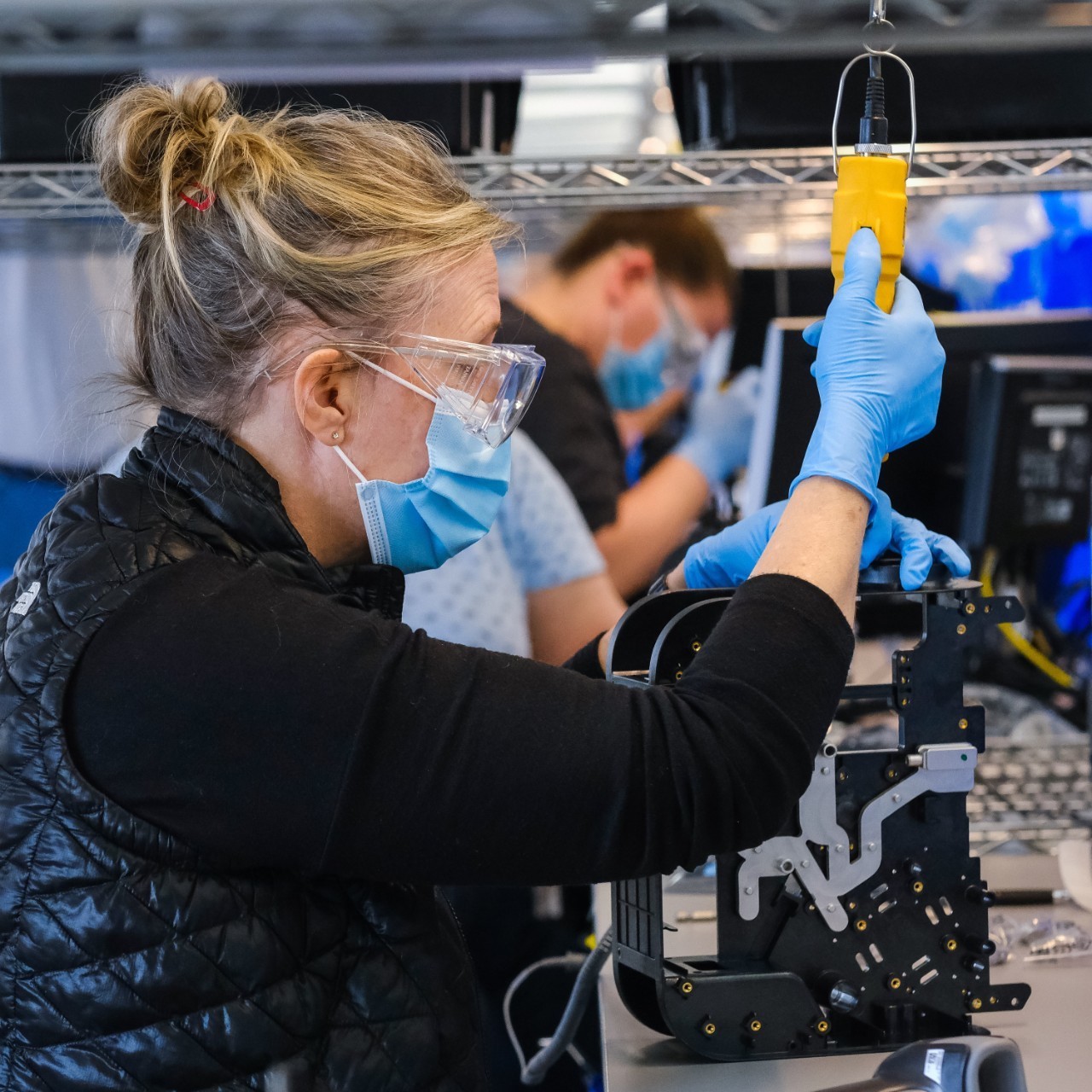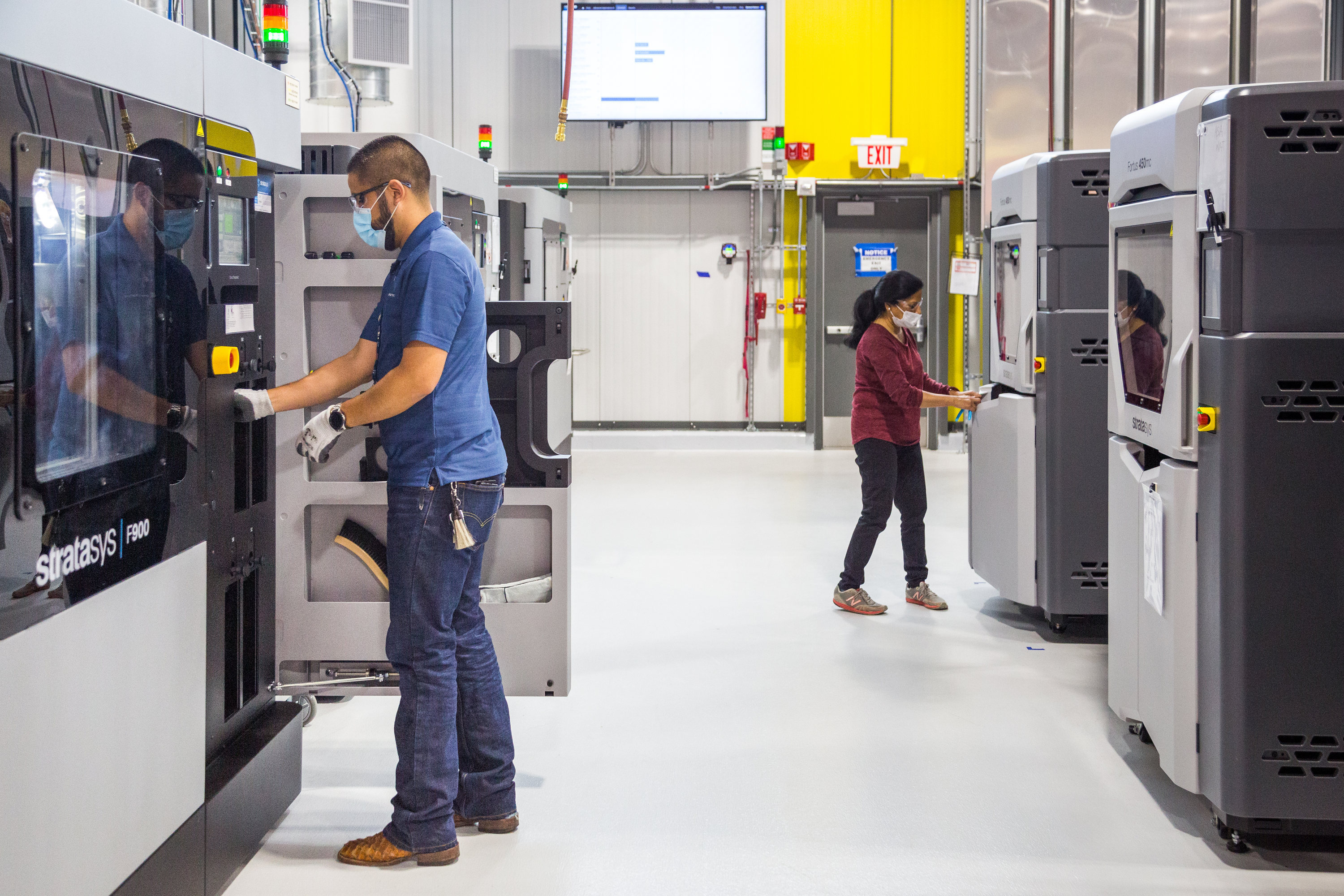General Motors (GM) is shifting its multi-decade road trip in additive manufacturing into high gear with accelerated efforts to expand tooling and manufacturing applications, including for its latest government contract to make ventilators and personal protective equipment (PPE) in the battle against COVID-19.
GM has leveraged 3D printing for prototyping applications for years—in fact, 75% of the parts in the 2020 Chevy Corvette prototype were 3D printed. Now, fresh off a commitment to add 17 new Stratasys FDM 3D printers, GM is expanding 3D printing into production-grade applications like tooling and parts manufacturing. Today, more than 700 GM employees are trained in the technology, and there is a significant effort underway to leverage 3D printing for the design and development of tooling to achieve time-to-market advantages, weight reduction, and cost efficiencies, according to Ron Daul, GM’s director of additive manufacturing.
“Where GM is really taking off is in educating its supply base and internal folks on the tooling applications and the value to be had,” notes Fadi Abro, automotive business segment leader at Stratasys.
GM’s big test for its 3D printing tooling applications came with its April award of a government contract to produce 30,000 critical-care ventilator units with Ventec Life Systems, with delivery promised for end of August. Instead of relying on machine shops and lengthy cycles to change over production lines, GM was able to reverse engineer part data for tooling fixtures from the original ventilator manufacturer and start outputting tooling right away with ventilator production and assembly soon after. There’s also an automatic offload path to transfer workloads to Stratasys Direct Manufacturing for parts on-demand, which helps GM run at a high utilization rate for its existing machines with the ability to expand in-house capacity when needed.
“A 3D printer doesn’t know if it’s printing a glove box or a ventilator case, but what it can do is pivot with demand and customize that output to meet the expectations of whatever a customer wants,” Daul explains. “That kind of agility is critical.”
 3D printing helped GM accelerate the production and delivery of 30,000 ventilators this month as part of a government contract in response to COVID-19. Image Courtesy of GM
3D printing helped GM accelerate the production and delivery of 30,000 ventilators this month as part of a government contract in response to COVID-19. Image Courtesy of GMBeyond the ventilator deal and expanded 3D printing of tooling, jigs, and fixtures, GM is also broadening use of 3D printing for production, particularly as part of its personalization and mass customization efforts, according to Ali Shabbir, GM’s engineering group manager, additive manufacturing product applications. Instead of spending big money and taking a protracted period of time to build out tooling for pre-production vehicles, GM is now 3D printing tooling for electric cars and other forthcoming vehicles, which speeds time to delivery and helps the company capitalize on first-mover advantage.
In addition to supplying printers, Stratasys serves as a critical partner to GM to support its burgeoning AM program. The pair collaborate on software and materials development and also works to educate suppliers on how to redesign product and tooling for AM. “The reason we work with Stratasys goes beyond the 3D printer itself—it’s the education and community working together to help bring about change,” says Dominick Lentine, GM’s team lead, additive manufacturing.
Watch this video to see GM’s ramped-up ventilator production effort in action.
About the Author
Follow Robotics 24/7 on Linkedin
Article topics
Email Sign Up
















